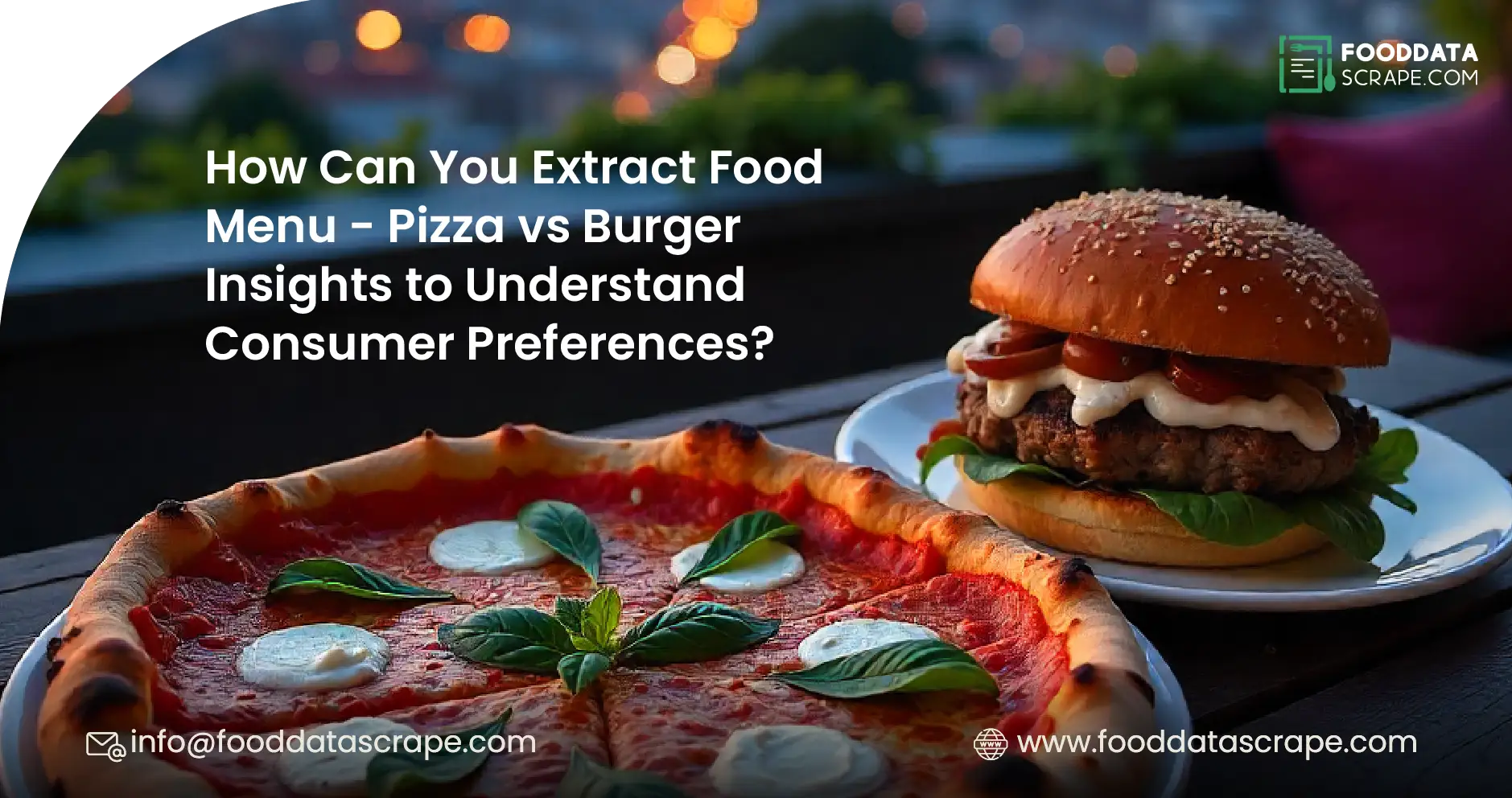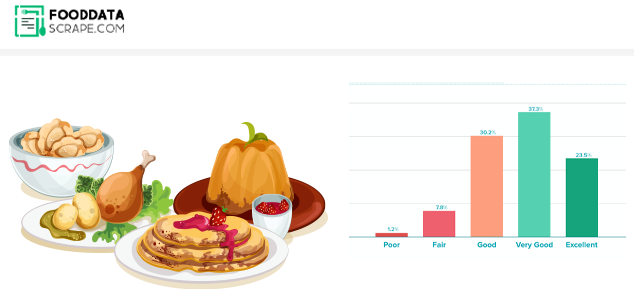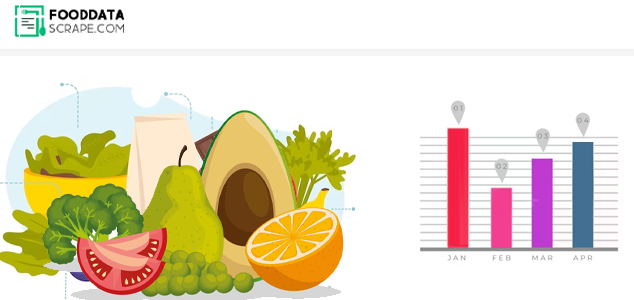Introduction
If your Friday evenings often spark debates over pizza versus burgers, you’re certainly not alone. Both of these comfort food staples have earned a permanent spot in global dining culture due to their unmatched flavor, adaptability, and cultural significance. Understanding how these foods perform in terms of consumer preference, menu offerings, and regional trends is critical for restaurants, food brands, and market analysts alike. By leveraging tools to Extract Food Menu - Pizza vs Burger Insights, businesses can access structured information on menu items, toppings, portion sizes, and pricing patterns, allowing them to identify what resonates most with customers. Additionally, Pizza vs Burger Menu Data Scraping provides a detailed overview of offerings across multiple locations and establishments, helping brands make informed pricing and marketing decisions. To gain even deeper understanding, companies can Scrape Pizza and Burger Reviews Data, analyzing real-time consumer feedback to uncover preferences, sentiment, and emerging trends, which ultimately guides menu innovation and customer engagement strategies.
Understanding Pizza: A Global Favorite
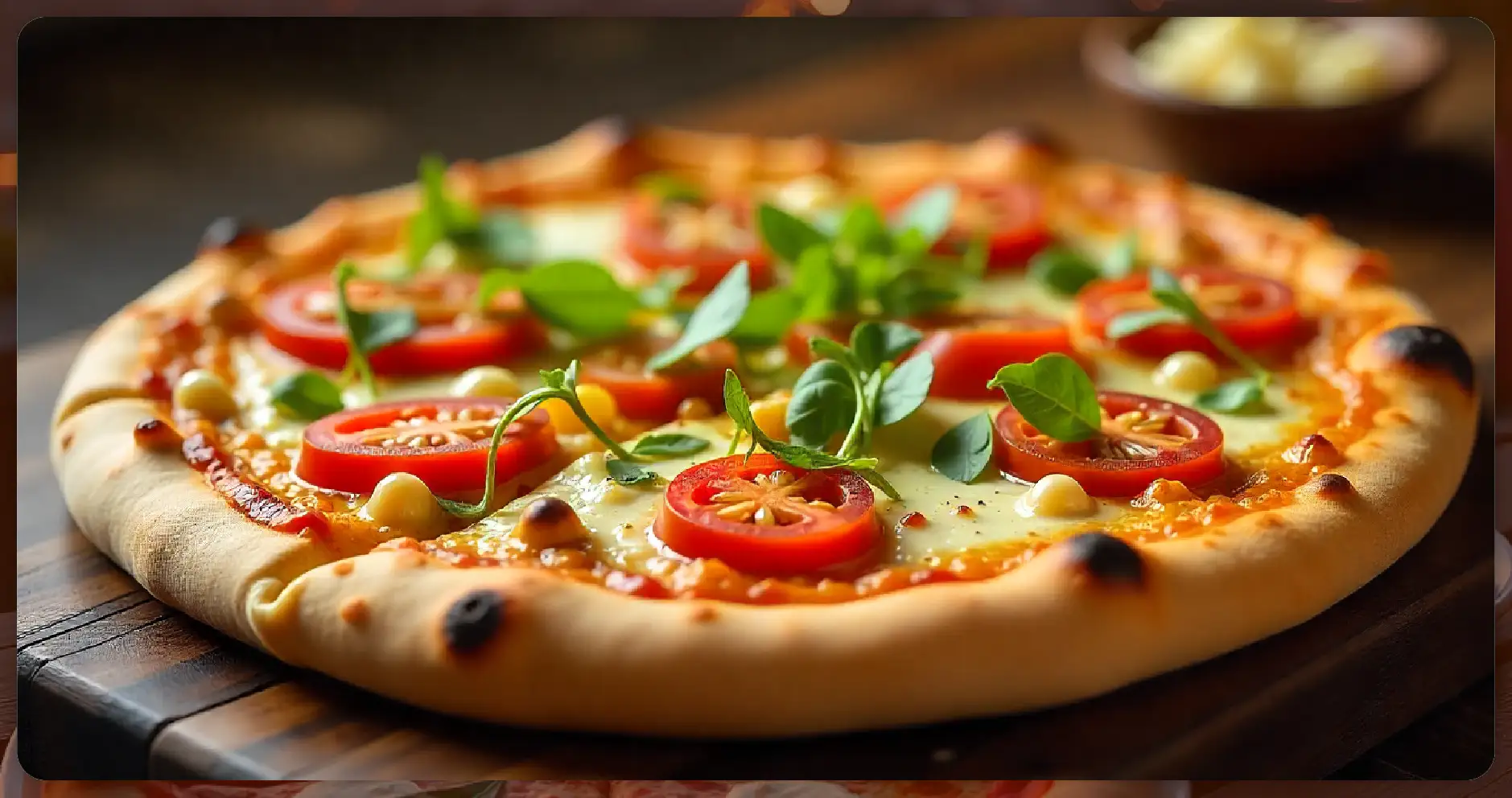
Pizza is traditionally a baked flatbread topped with tomato sauce, cheese, and a variety of ingredients that reflect local tastes. Originating in Naples, Italy, it was designed to be fast, affordable, and versatile. Today, pizza has become a global culinary icon, with countless variations ranging from thin-crust New York slices to Chicago deep-dish pizzas.
Classic Margherita pizza highlights simplicity with fresh basil, mozzarella, and tomato, while modern pizza trends include innovative toppings such as hot honey, artisanal cheeses, and even exotic fruits. Restaurants and food delivery platforms benefit from Pizza vs Burger Consumer Preference Scraper tools, which help them track what toppings, crust types, and flavor combinations customers prefer in different regions.
Understanding Burgers: The American Staple
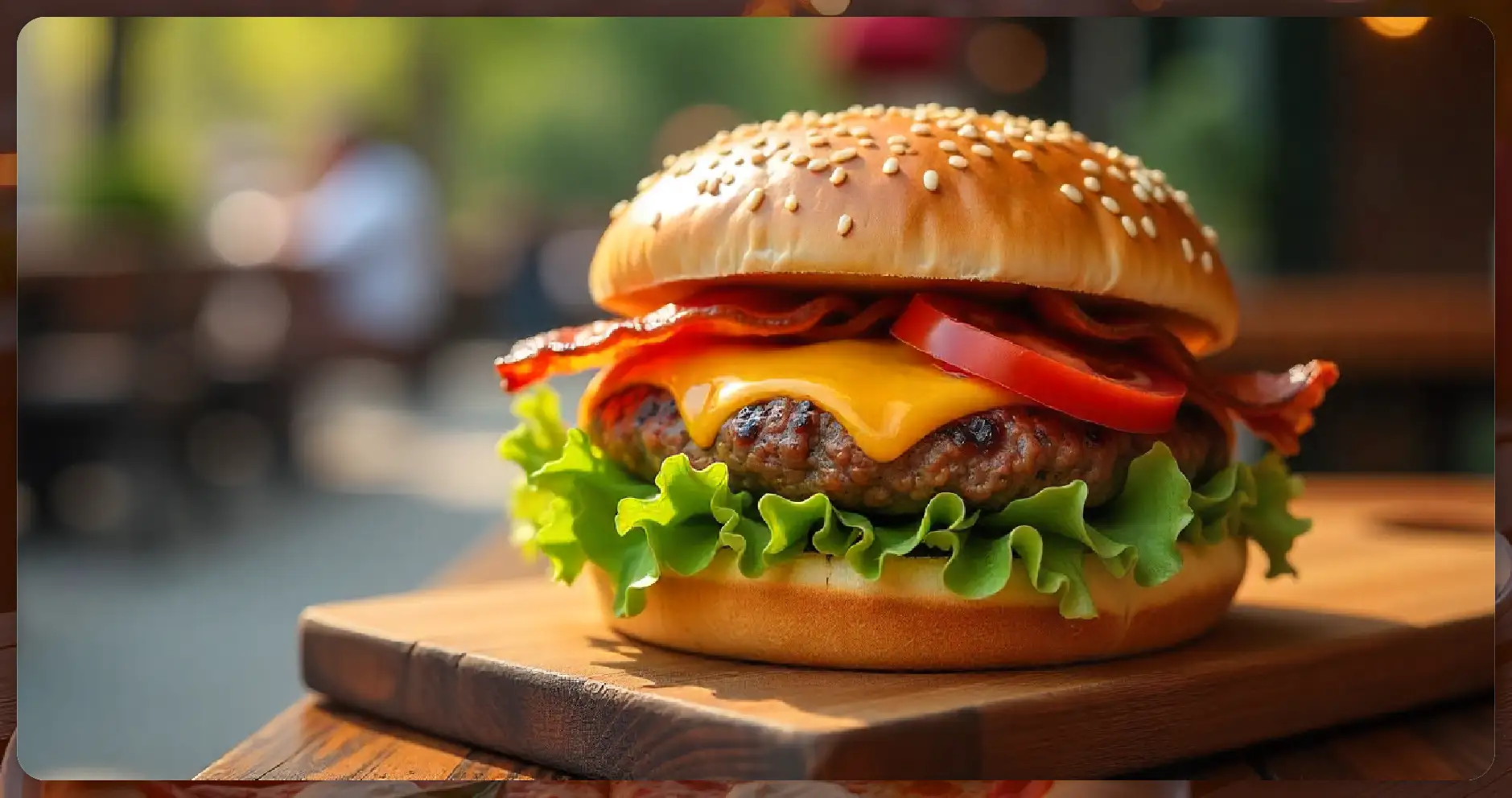
Burgers, or hamburgers, are a classic dish typically consisting of a ground meat patty—traditionally beef—sandwiched between two buns and garnished with a variety of toppings such as cheese, lettuce, tomato, pickles, onions, and sauces. Though the burger’s roots can be traced back to Hamburg, Germany, it has long since become an iconic symbol of American dining culture, evolving into a staple in fast food, casual dining, and gourmet restaurants alike.
In today’s culinary landscape, burgers are highly versatile and customizable. Beyond traditional beef, restaurants now offer chicken, turkey, lamb, and plant-based patties to cater to health-conscious consumers and those following vegetarian or vegan diets. Spicy chicken burgers, fusion-inspired creations, and gourmet veggie patties reflect growing global influences and evolving flavor preferences. Advanced tools like Geo-targeted Pizza vs Burger Price Scraping allow restaurants and food platforms to monitor regional pricing, menu variations, and local consumer trends, enabling data-driven decisions for menu optimization, promotions, and competitive positioning.
Key Differences Between Pizza and Burgers
While both foods are immensely popular, each has unique characteristics that influence consumption:
- Calorie Count - A cheese pizza slice ranges from 200–300 calories, with additional toppings adding calories. Burgers vary widely—fast food, restaurant, and homemade versions differ. On average, a homemade burger without sides contains about 600 calories. Using Pizza vs Burger Promo & Discount Data Scraper can help restaurants track promotions and maintain calorie-conscious menu options.
- Carbohydrates - Pizza tends to be high in carbohydrates due to its dough-based crust. Alternative crusts like cauliflower or gluten-free options exist but are less common. Burgers can also be carb-heavy when served on traditional buns, but lettuce wraps or keto-friendly buns provide low-carb alternatives.
- Fat Content - Both foods are rich in fats from cheese, sauces, and protein. Selecting lean proteins, plant-based cheeses, or lower-fat ingredients can make pizza and burgers healthier while preserving flavor. Pizza vs Burger Price Comparison Scraper tools can monitor how healthier versions are priced across competitors.
- Taste and Customization - Customization is a major appeal of both dishes. Consumers can choose toppings, sauces, protein types, and spices, creating a unique flavor experience every time.
- Production and Convenience - Pizza is typically baked, often in specialized ovens to enhance flavor. Burgers are generally grilled, cooked on a stove, or prepared on flat-tops, making them convenient for home cooks and casual dining. Restaurants using Food Delivery Data Scraping Services can track preparation and delivery times to optimize customer satisfaction.
Unlock actionable insights and optimize your menu strategy today—let us help you scrape and analyze food delivery data effortlessly!
Pizza and Burger Trends
Pizza Trends
Global pizza trends focus on health, flavor innovation, and premium ingredients. Consumers increasingly choose gluten-free crusts, plant-based cheeses, or alternative proteins. Gourmet toppings, seasonal flavors, and artisanal ingredients appeal to adventurous diners. Restaurants employing Restaurant Menu Data Scraping can analyze these trends and adjust offerings in near real-time.
Burger Trends
Burger trends mirror those in the pizza world, highlighting alternative proteins, global flavors, and health-conscious options. Mushroom burgers, veggie patties, and spicy fusion creations cater to evolving dietary preferences. Tracking these developments through Food Delivery Scraping API Services enables brands to deliver timely menu updates to digital channels.
Nutritional Comparison
| Feature | Pizza | Burger |
|---|---|---|
| Average Calories | 200–300 per slice | ~600 per burger |
| Carbohydrates | High | Moderate–High |
| Fat Content | High | High |
| Protein | Moderate | High |
| Customization | Extensive | Extensive |
Using data-driven tools, restaurants can offer lighter or customized menu items, such as cauliflower-crust pizzas or lettuce-wrapped burgers, aligning with health trends.
Market Statistics
- Over 2.4 million tons of pizza sold worldwide in 2022.
- Most Americans order pizza a few times per month.
- Social media discussions about pizza increased by 3.5% in the past year.
- Over 74,000 pizza restaurants exist in the U.S.
- Americans consume almost 3 burgers per week on average.
- Vegan burgers are the most popular dietary adaptation.
- Burger restaurants generate over $170 million in annual revenue.
By using Restaurant Data Intelligence Services, businesses can monitor these metrics, track competitor performance, and identify opportunities to innovate.
Popularity Insights: Pizza vs Burgers
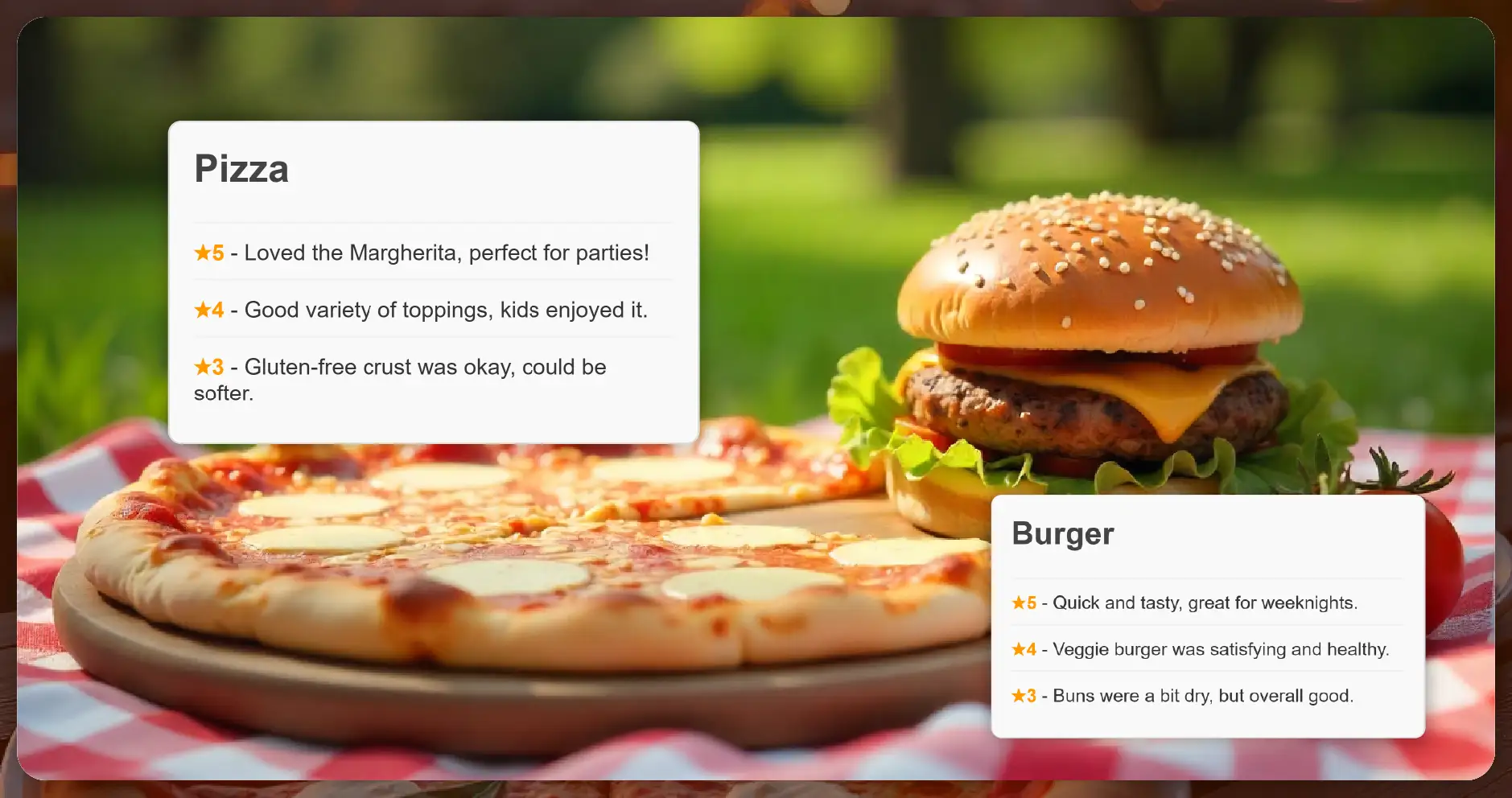
Pizza has long been a favorite for social gatherings, parties, and delivery-based occasions due to its shareable nature and versatility. Its customizable toppings, wide range of portion sizes, and ability to cater to large groups make it ideal for communal meals, celebrations, and casual get-togethers. From classic Margherita to gourmet creations with exotic ingredients, pizza offers something for nearly every palate. Innovations such as plant-based cheeses, gluten-free crusts, and alternative protein toppings further expand accessibility, making pizza an option for health-conscious and dietary-restricted consumers without compromising flavor or experience.
Burgers, on the other hand, have cemented their place as the go-to choice for quick, casual dining, and weeknight meals. Their handheld nature, ease of preparation, and adaptability to personal preferences make them a convenient and satisfying option for individuals or small groups. Health-conscious diners increasingly gravitate toward veggie burgers, turkey or chicken patties, and low-carb bun alternatives, reflecting a broader trend toward mindful eating.
By employing Scrape Pizza and Burger Reviews Data, brands and restaurants can monitor real-time consumer sentiment, track trending toppings, assess satisfaction with new menu items, and identify areas for innovation. These insights allow businesses to refine offerings, optimize menus, and tailor marketing strategies to meet evolving customer expectations, ensuring both pizza and burger options remain relevant and competitive in a rapidly changing food landscape.
Why Businesses Should Leverage Pizza vs Burger Data?
Data scraping and analysis provide a competitive edge:
- Track emerging trends in toppings, ingredients, and dietary adaptations.
- Monitor competitor pricing in real-time using tools like Geo-targeted price scrapers.
- Analyze customer reviews to understand preferences and satisfaction levels.
- Optimize menu offerings based on popularity and sales data.
- Identify opportunities for innovation and promotional campaigns using Pizza vs Burger Consumer Preference Scraper.
Restaurants and delivery platforms that leverage these insights can improve operational efficiency, enhance the customer experience, and stay ahead in a competitive market.
How Food Data Scrape Can Help You?
- Automated Food Delivery Data Collection - We efficiently extract real-time data from multiple food delivery platforms, including menu items, pricing, availability, and special offers, reducing manual effort and improving accuracy.
- Consumer Preference Analysis - By scraping ratings, reviews, and feedback, we provide insights into customer preferences, satisfaction trends, and emerging tastes for informed business decisions.
- Competitive Benchmarking - Our services allow businesses to monitor competitor menus, pricing strategies, and promotional campaigns to identify opportunities and stay ahead in the market.
- Regional and Geo-Specific Insights - We capture location-based data, helping brands understand local demand patterns, price sensitivity, and menu popularity across different regions.
- Seamless Data Integration - Collected data can be fed into dashboards, APIs, or analytics systems, enabling actionable insights, predictive analysis, and enhanced operational efficiency.
Conclusion
The pizza vs burger debate is not about choosing a winner; it’s about appreciating the distinct qualities and appeal of each dish. Pizza offers shareability and creative topping options, while burgers provide a quick, customizable, handheld meal that fits everyday dining needs. Restaurants and food brands can leverage Food Delivery Intelligence services to gain insights into consumer ordering patterns and preferences. Using a Food Price Dashboard, businesses can track real-time pricing trends and analyze competitive strategies across different regions. Comprehensive Food Delivery Datasets allow brands to monitor promotions, menu popularity, and delivery performance. By applying these data-driven insights, restaurants can innovate menu offerings, optimize operations, enhance customer satisfaction, and ensure both pizza and burgers remain relevant staples in a competitive and evolving food landscape.
If you are seeking for a reliable data scraping services, Food Data Scrape is at your service. We hold prominence in Food Data Aggregator and Mobile Restaurant App Scraping with impeccable data analysis for strategic decision-making.

























































































